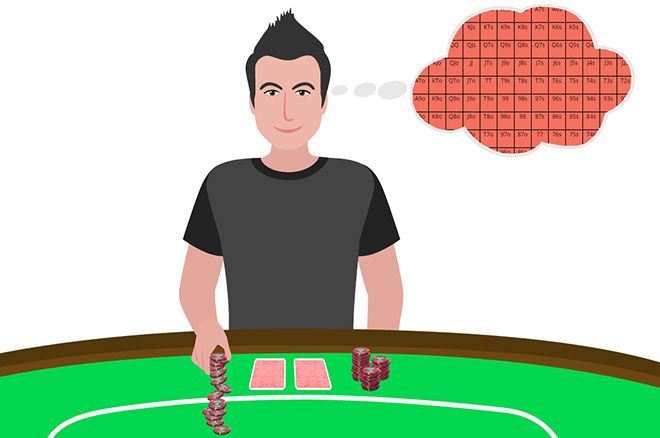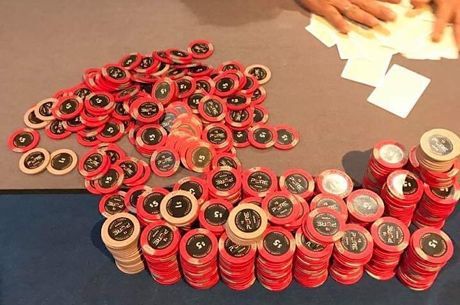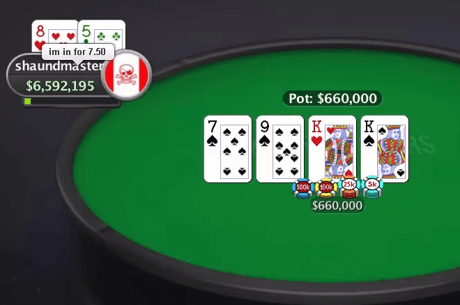This Stupid-Simple Tactic Will Help You Avoid Tough Spots

Too often, players will take actions in a hand without considering their plan for future streets and decisions. This will lead to being faced with challenging spots all the time.
By carefully planning your line of action in any hand, however, you can avoid making incorrect decisions and make post-flop play simpler.
Let��s dive right into an example that illustrates this point.
When making a decision at the table, always think about why you are making it and consider your plan for the rest of the hand before taking action.
Suppose you��re playing $0.50/$1.00 online with $100 effective stacks. The player in the cutoff raises to $2.50 and you call on the button with 10?9?. The small and big blind get out of the way.
With $6.50 in the pot, you see a flop of J?3?2? and your opponent checks.
You should be happy to bet when checked to on this flop, as your ten-high has no showdown value and some backdoor draw potential.
When deciding whether or not to bet on any flop with any hand, it is very important to consider what actions you may be faced with and what may develop on future streets.
Let��s start by going over our opponent��s possible responses to this bet:
- Our opponent could fold
Obviously this would be a great result for us as we have ten-high and no outs to a hand stronger than 2nd pair.
- We could face a check-raise from our opponent
While this may seem like a terrible result at first, it��s actually not that bad. Our opponent is going to check-raise here sometimes and there��s nothing we can do to stop it, but we can make sure we aren��t in a bad spot when it happens. It couldn��t get much clearer than ten-high, no draw facing a check-raise �� easy fold.
- Our opponent could call
Well, our flop bluff didn��t work. At least now we get to see a turn card, and there are a lot of good ones for our hand here. Any club gives us a flush draw, and a 7x, 8x, Qx, or Kx all give us straight draws. We can happily continue our bluff on any of these turn cards. Not to mention we can turn a T or 9 for 2nd pair, which will more-than-occasionally be the best hand.
Let��s go back to that same spot on the J?3?2? flop, but this time we have AxQx off suit. Some of you would choose to 3-bet this hand preflop, but for the sake of the example let��s say you decided to mix it up and call this time.
If we decided to bet the flop when checked to, what are the possible outcomes?
- Our opponent could fold
This is a decent result for us as we��ve won the pot with a hand that was likely good, but somewhat vulnerable. It��s very unlikely our opponent will fold a better hand than AQ against a single bet, so it��s hard to call this a successful bluff. It��s more like a successful protection bet.
- We could face a check-raise from our opponent
This is a relatively disastrous result. Our opponent��s value range (JxJx, 3x3x, 2x2x, AxAx, KxKx) has us drawing pretty dead, but we have solid equity against hands they��d bluff with. We��re choosing between folding out potentially solid equity and putting in money against a value range that has us dead. Avoiding this tough spot is part of why I��d prefer to bet a hand that has an easier decision against check-raise.
Our opponent could call
This is a pretty average-at-best result. By calling, our opponent has signaled that he likely has a stronger hand than us. That said, we have solid equity with two overcards against most of those hands (4x4x-10x10x, Jx9x suited), and we even beat a few of them (Ax4x suited, Ax5x suited, KxQx suited). Take a look at the equity breakdown in Poker Equilab vs call:
I gave the cutoff a range containing Jx9x suited, 4x4x-10x10x, AxQx-AxKx suited, AxQx-AxKx off suit, and the backdoor flush draw combos of Ax6x-Ax10x suited and KxQxs.
AxQx has 37.49% equity versus our opponent��s estimated calling range. Seems like we��d be better served to check the AxQx back.
When making a decision at the table, always think about why you are making it and consider your plan for the rest of the hand before taking action.
There Are Two Ways to Get Good at Poker
You could spend long hours studying thousands of poker hands or you could learn through trial and error after countless sessions.
You can do either of those. You will shed blood, sweat, and tears in the process, like we did��
...or, you can use our knowledge and experience as a shortcut on your path to poker success when you get the $7 Postflop Game Plan.
Get the Proven System for Winning Poker Now!
Going through this mini-training course will take you less than an hour...but trust me, you're going to want to re-watch it again and again to absorb the valuable information.
Good luck out there!
Sponsor generated content by Upswing Poker








